I have a context that I have defined as 'HeaderContext' - I know its getting my data correctly becuase I can see the data in the console.log(headerData.Menu.PageUrl) line.
However I only see that when I uncomment the line and save the file after the page has loaded, so I suspect that the problem is that the data is not avalible when the page first loads. - This is my first react project so I think I'm missing something fundamental about what react is doing here.
Here is my code so far:
function Header() {
const [headerData] = useContext(HeaderContext)
console.log("heder data");
console.log(headerData.Menu.PageUrl);
return (
<nav>
<Link to="/">Logo here</Link>
<ul>
<li><Link to={headerData.Menu.PageUrl}>Menu</Link></li>
<li><Link to="/contact">Contact</Link></li>
</ul>
</nav>
)}export default Header;
The error that I get is:
index.js:10 Uncaught TypeError: Cannot read properties of undefined (reading 'PageUrl')
For clarity here is the HeaderContext:
import React, { useState, createContext, useEffect } from 'react';
import API from "../../API"
export const HeaderContext = createContext();
export const HeaderProvider = (props) => {
const [headerData, setHeaderData] = useState([]);
const getHeader = async () => {
const header = await API.fetchHeader();
setHeaderData(header);
};
useEffect(() => {
getHeader();
}, []);
return (
<HeaderContext.Provider value={[headerData]}>
{props.children}
</HeaderContext.Provider >
);}
And here is the App.js file:
function App() {
return (
<MenuProvider>
<div className="App">
<HeaderProvider>
<Header />
</HeaderProvider>
<Routes>
<Route path="/menu" element={<Menu />} />
<Route path="/menu/:id" element={<Category />} />
<Route path="/contact" element={<Contact />} />
<Route path="/more/faqs" element={<Faqs />} />
{/*<Home />*/}
</Routes>
<Footer />
</div>
</MenuProvider>
);
}
